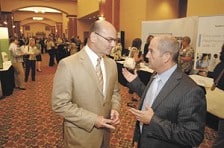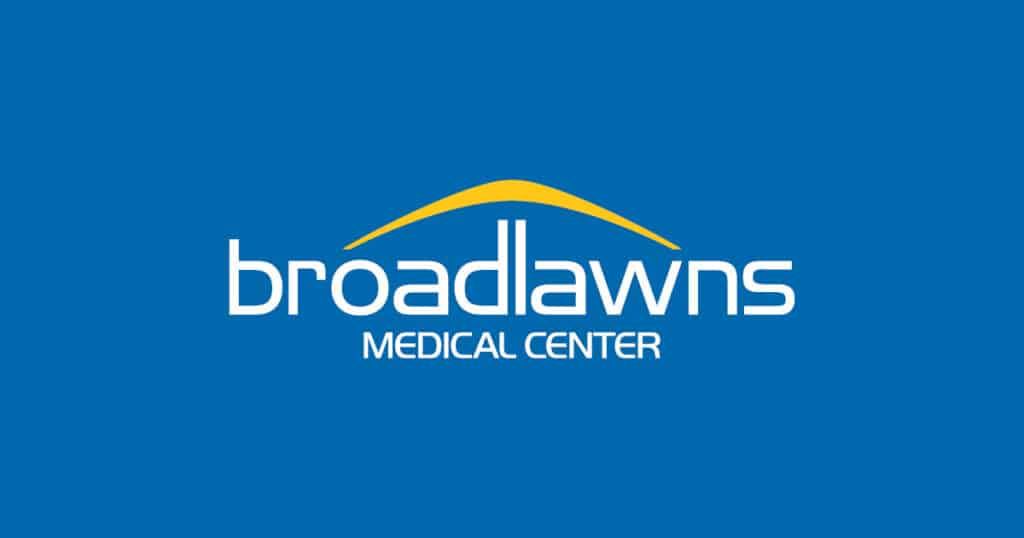Iowa starts ‘walking the walk’ on e-health records
More than 1,400 doctors enrolled to get help for setting up electronic record systems

Electronic medical records have moved from the “we’re talking about it” to the “we’re doing it” phase, say buyers and sellers of the systems in Iowa. The biggest benefit will be more efficient, coordinated care for patients, according to health-care officials.
The Iowa Foundation for Medical Care (IFMC) last week co-hosted the seventh annual Iowa e-Health Summit. The two-day conference held at The Meadows Events & Conference Center in Altoona attracted more than 300 health-care professionals from across the state. Other organizers of the summit were the Iowa Medicaid Enterprise and the Iowa e-Health program.
“It’s been phenomenal to see the progression as far as the interest and the use of health information technology,” said Dr. Tim Gutshall, the IFMC’s chief medical officer.
According to a national survey by the U.S. Centers for Disease Control and Prevention, about half of physicians’ offices across the country now have some form of electronic health record system. However, the survey found that just 10 percent of medical offices had what would be considered fully functional systems.
Meaningful use
Many physicians have been hesitant to adopt electronic medical record systems because of their high cost, technical complexity and other hurdles. However, the systems represent a critically important tool for doctors, Dr. David Hunt, acting director of the Office of Health IT Adoption in the U.S. Department of Health and Human Services, told summit attendees.
“If we as a medical community cannot keep up with (the technology), we cannot expect to get any better results than we are now,” he said.
Using electronic medical records, physician practices can more easily gain insight into health trends in their patients, from how many smoke to how many are current on their immunizations, Hunt said. And when medical offices eventually connect their systems, it will streamline the ability of hospitals and doctors to share data.
The federal stimulus package enacted by Congress in 2009 included approximately $30 billion in incentive payments for doctors and health systems to become early adopters. On average, a doctor who meets criteria for “meaningful use” of a system can qualify for up to $44,000 in Medicare incentive payments in the next several years.
States have also been authorized to use their Medicaid dollars as an incentive. In Iowa, Medicaid has already paid out more than $11 million in incentives to doctors who have become early adopters of electronic health record systems, said Kim Norby, executive director of the Iowa E-Health program. Formed a year ago by the Iowa Department of Public Health, the collaborative effort’s goal is to establish a statewide health information exchange.
“We’re really working on adoption across the state, from the health-care system level all the way down to the independent practicing docs,” he said.”
Broadlawns Medical Center, recognized last month as one of the “Most Wired” hospitals by Hospitals and Health Networks magazine, has come a long way in the past five years, said Al White, Broadlawns’ senior vice president for business services. The hospital is ranked by the Health and Human Services Department as a Stage 6 facility in terms of its adoption of electronic medical records, a level achieved by only 1.5 percent of the nation’s hospitals so far. The highest level, Stage 7, represents the 1 percent of hospitals that can securely share electronic patient data with any other hospital or medical office.
White estimates that Broadlawns has incurred more than $6 million in direct costs to upgrade its technology, but expects to receive about that much in federal incentive payments for doing so. “I think the government has put together a good program,” he said. “What it’s done for me and other providers is really to move faster with it.”
Goal exceeded
Another indication of the interest has been enrollment by Iowa doctors and hospitals in a nationwide technical assistance program funded by the Health and Human Services Department. Gutshall said more than 1,400 Iowa physicians have signed up to receive help from the Health Information Technology Regional Extension Center, which operates from the IFMC’s headquarters in West Des Moines. The center’s goal was to enroll at least 1,200 physicians to receive on-site technical assistance in setting up electronic records systems.
“One of the statistics that we’re really excited about is that we are assisting 70 percent of the independent primary care offices in the state,” he said.
Sales of electronic health record systems have been another indicator of surging demand. Last week’s conference drew representatives from 19 technology companies eager to provide attendees with details of their newest products.

Moving to electronic records has been a frustrating but worthwhile journey, said Dr. Hanumantha Kolusu, a Camanche internist.
“I own my own practice, and my building is paid for, so that’s why I can do it,” he said. “If you have to install it and also suffer the productivity loss that we suffered and also update everything, it’s very expensive.”
Nevertheless, Kolusu has become a strong advocate, and has given lectures about his experiences to colleagues across the state.
“I like to treat patients like my own family,” he said. “I would like to know everything is done safely and they’re getting all the best practices.”











